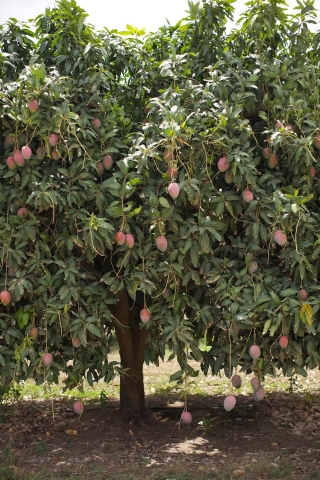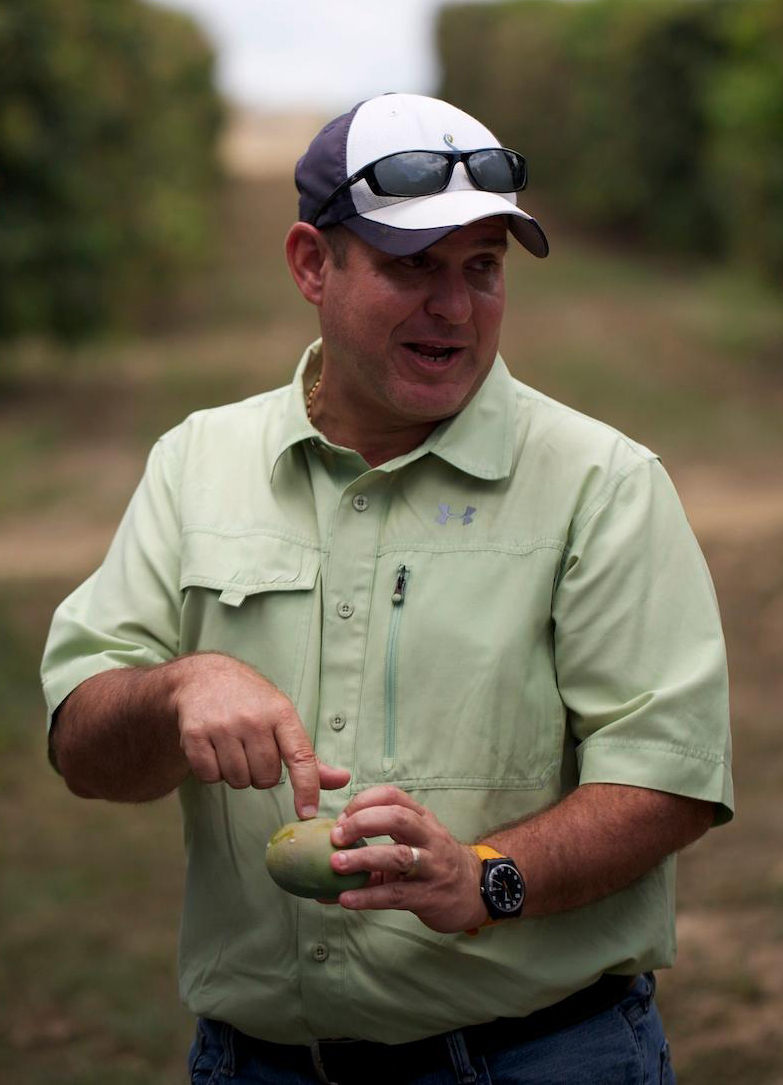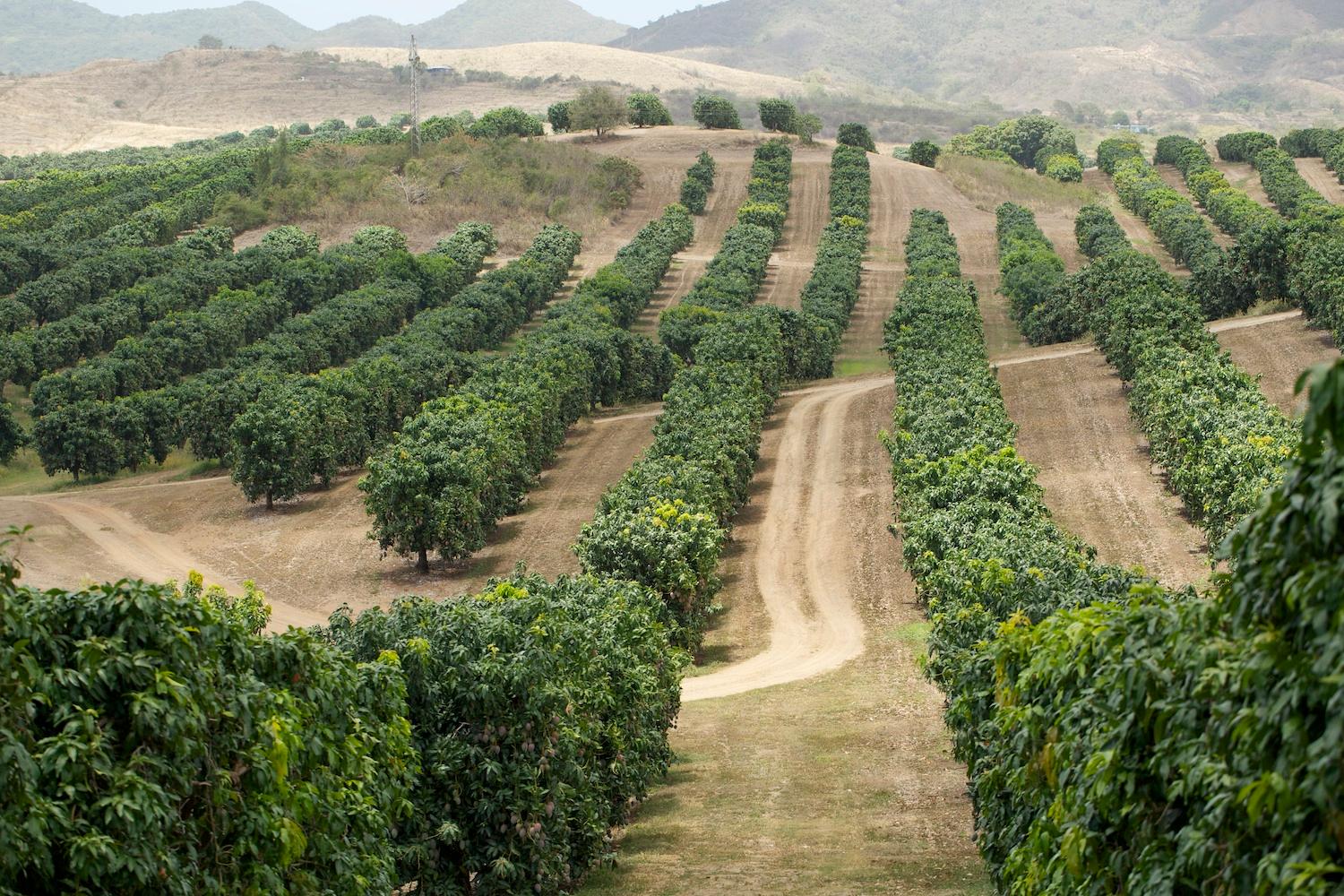
Growing Mangos in Puerto Rico
30 May 2023Chefs and Puerto Rican mango farmer face similar challenges and opportunities while operating their businesses.
By Lisa Parrish, GMC Editor
Chefs, can you picture this?
You own a luncheonette that’s open one hour each day and is sporadically, wildly popular. Customers flock to your counter roughly three times a week and order your special. Some customers like their meal cooked extremely rare while others order it well done. How do you plan your business with variables such as limited operating hours, sporadic customer surges, fluctuating cooking time, all the while keeping customers’ needs forefront?
 To find the answer, you might take a page from the operations playbook of Puerto Rico mango farmer Veny Marti.
To find the answer, you might take a page from the operations playbook of Puerto Rico mango farmer Veny Marti.
To understand the unique challenges of mango farming, one must first understand how to cook with mangos. Mangos begin their ripening process in a very hard, high-starch stage – think pale yellow potato. Firm mangos are crunchy and commonly used in recipes such as spirals, salads, pickles and chutney. As the mango matures through its five ripening stages, the fruit’s internal flesh changes color to a deeper yellow, becomes softer and its Brix degree score (or sweetness level) increases. Mangos in the fully ripe stage are soft to the touch and can be used in smoothies, sauces and desserts. Click here to read a Gold Medal Classroom story focusing on mango ripeness and innovation.
“It’s a very versatile fruit,” said Marti, whose family has been commercially farming Keitt mangos since the early 90s. His customers purchase mangos in different quantities throughout the various ripening stages.
Another challenge faced by the second-generation farmer is that he is like David growing mangos in a sea of Goliath farmers. Puerto Rico is a Caribbean island 100 miles long by 35 miles wide. He manages more than 5,000 acres, which is considered large by Island standards but small compared to other growers. His competitors are large producers from Peru, Brazil, Ecuador and Mexico.
So, how does Marti operate a successful mango farm? He knows how to compete in this market.
“I offer consistency and in foodservice, consistency is key,” explained Marti. On the south-central coast of the island, his farm is situated in a dry microclimate on sandy soil with ideal temperatures and plentiful clean water from the mountains. This combination allows Marti to harvest year-round.
Click here to watch a video featuring Marti and two Puerto Rican chefs discussing growing and cooking with mangos.
“There are specific weather patterns,” he said. “Most mangos (in the US market) come from Mexico. But, if it rains during their harvesting time, it’s over. Then, it (the demand for mangos) moves to Peru from January through March. After that, mangos typically come from Mexico.” It’s during gaps in market production, when mangos are finishing in one country before the next country is fully producing, that Marti has found his niche. “We may be small volume (compared to larger growers from bigger countries) but we market in specific, big windows,” he said.
“For our customers, we offer the same mangos coming from the same farmer from the same region,” Marti continued. “We feel this is value added.”
In addition to Puerto Rico’s ideal climate, mangos trees are tropical trees that are hurricane and typhoon resistant. “In Puerto Rico, wild mango trees growing on the roadside can get as tall as 40 feet and as wide as 20 feet,” explained Marti. “We trim our trees at 14 feet tall and a spread of eight to 10 feet. We prune the trees to keep them manageable.”
The benefits of a sturdy mango grove became obvious on Sept. 20, 2017, when Hurricane Maria’s eye struck Puerto Rico. “We had between 120 and 150 mph winds for eight hours,” Marti recalled. Hurricane Maria is regarded as the worst natural disaster on record to affect Puerto Rico with nearly 3,000 people killed.
“We lost two percent of our trees and the other 98 percent were damaged,” Marti said. It has taken more than five years for the trees to recover. Also, the Island sustained two more direct hits from Tropical Storm Isaias on July 29-30, 2020, and Hurricane Fiona on September 14, 2022. “Fiona impacted our ability to offer mangos year-round. In addition to the last three storms, we also had severe drought.”
Marti explained that they have gone from experiencing one storm every five to 10 years, to enduring larger more damaging storms with more frequency. However, growers in Puerto Rico began packing fruit in April for the 2023 season and Marti said, “So far it looks really good. We expect to be close to exporting 1.5 million boxes this year.”
Part of keeping up with the demand is understanding how the market has changed through the years since his dad started the farm as a hobby in 1989 and harvested for the first time in 1993. “The mango market has changed drastically. We had to adapt to stay in business,” he said. Marti gives the example of how during the 90s everyone wanted to buy a red mango that looked much like a red delicious apple. “It’s so much better now as customers care about a better flavor profile, with varieties like Kent and Ataulfo widely available. The only thing that is the same today is that it’s still a mango. Everything else has changed. Adapting is essential.”
Photos courtesy of National Mango Board.
